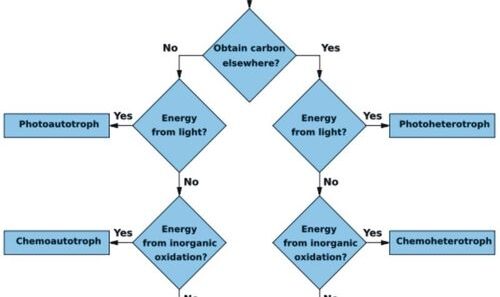Energy conservation is not merely a buzzword; it is a pivotal strategy that can significantly impact our schools and the environment. As institutions of learning, schools have the unique opportunity to pioneer energy-saving initiatives and instill sustainable practices in the minds of young learners. By adopting effective energy conservation strategies, schools can not only reduce their carbon footprint but also save on utility costs, which can be redirected toward educational resources.
To initiate a transformative process, schools can explore various key areas for energy conservation: awareness, infrastructural changes, technological innovations, and behavioral adjustments. Each component plays a crucial role in developing a culture of sustainability among students and faculty alike.
1. Cultivating Awareness and Education
Before implementing any energy-saving measures, it is essential to create a culture of awareness. Educators can introduce topics surrounding energy conservation in the curriculum, encouraging students to understand the importance of conserving energy. Workshops, seminars, and presentations can spark curiosity and lead to discussions about the implications of excessive energy use.
Interactive lessons can engage students in problem-solving regarding energy issues. Organizing competitions related to energy reduction can provide practical experience. For instance, a “Save Energy Challenge” could encourage classes to monitor their consumption over a month, rewarding the class that reduces energy usage the most. Such initiatives empower students to take ownership of their environment.
2. Evaluating Infrastructure
Many schools operate in buildings that may not be optimized for energy efficiency. Conducting an energy audit is a foundational step. This process identifies areas of significant energy loss, such as drafts in windows or outdated heating systems. Schools should consider retrofitting their buildings with energy-efficient materials and systems.
Insulation is a critical factor; proper insulation minimizes heating and cooling demands, resulting in substantial energy savings. Installing energy-efficient windows can also drastically reduce the amount of energy required to regulate indoor temperatures. Furthermore, using reflective roofing can diminish heat absorption, enhancing overall comfort and efficiency.
3. Embracing Technology
The infusion of technology into energy conservation efforts can yield remarkable results. Smart thermostats, for example, can regulate temperature based on occupancy, ensuring that energy is not wasted during periods when the building is unoccupied. Additionally, adopting energy-efficient LED lighting can lead to a significant reduction in electricity consumption.
Solar power is another avenue for schools to embrace clean energy. Installing solar panels not only harnesses renewable energy but also serves as a practical educational tool. Students can analyze energy generation from solar panels and understand the science behind renewable resources. This tangible experience fosters a sense of responsibility toward sustainability.
4. Behavior Modification
Cultural shifts toward energy saving begin with fostering awareness, but they are cemented through behavioral change. Establishing norms around energy use in schools can create lasting impacts. Simple actions, such as turning off lights when leaving a room, unplugging unused electronic devices, and utilizing natural daylight, can be emphasized continuously.
Creating an energy-saving committee made up of students and faculty can promote accountability. This committee can hold workshops, set goals, and monitor progress, encouraging the entire school community to participate in energy conservation efforts. Recognizing and celebrating achievements, such as meeting energy reduction targets, can reinforce positive behavior and motivate others.
5. Engagement with the Community
Collaboration with local utilities can lead to fruitful partnerships. Many utility companies offer programs and incentives designed to help schools implement energy-efficiency measures. Establishing these connections can provide resources and funding for energy conservation projects. Furthermore, schools can engage parents and the surrounding community by disseminating information on energy-saving practices beyond school walls.
Community service projects that demonstrate energy conservation, such as tree planting or promoting alternative transportation methods like biking and carpooling, can enhance awareness. Schools can host events where students share their discoveries about energy conservation, empowering not only themselves but also their families to adopt similar practices.
6. Reducing Water Usage
Though often overlooked, water conservation is an integral part of energy efficiency, as significant energy is required for water heating and distribution. Implementing water-saving fixtures, such as low-flow faucets and dual-flush toilets, can dramatically reduce water waste and associated energy costs. Moreover, creating awareness around water conservation can complement energy-saving efforts, allowing schools to echo the message of sustainability more broadly.
7. Continuous Improvement and Feedback
Sustainability is not a one-time effort but a continuous journey. Establishing a system for ongoing assessment of energy consumption allows schools to measure the effectiveness of their initiatives. Regularly reviewing energy data and seeking feedback from the school community can illuminate areas for further improvement. It is essential to adapt strategies based on performance metrics and to remain open to innovative approaches.
In conclusion, schools serve as foundational platforms for instilling environmental stewardship in future generations. By actively implementing energy conservation practices, schools can create a ripple effect that fosters awareness, drives innovation, and cultivates responsible behavior. The journey of conserving energy is not just about resources; it is about reshaping perspectives toward sustainability, ultimately leading us one step closer to a greener future. Energy conservation at school is a promise—a promise to teach, to save, and to repeat for years to come.







